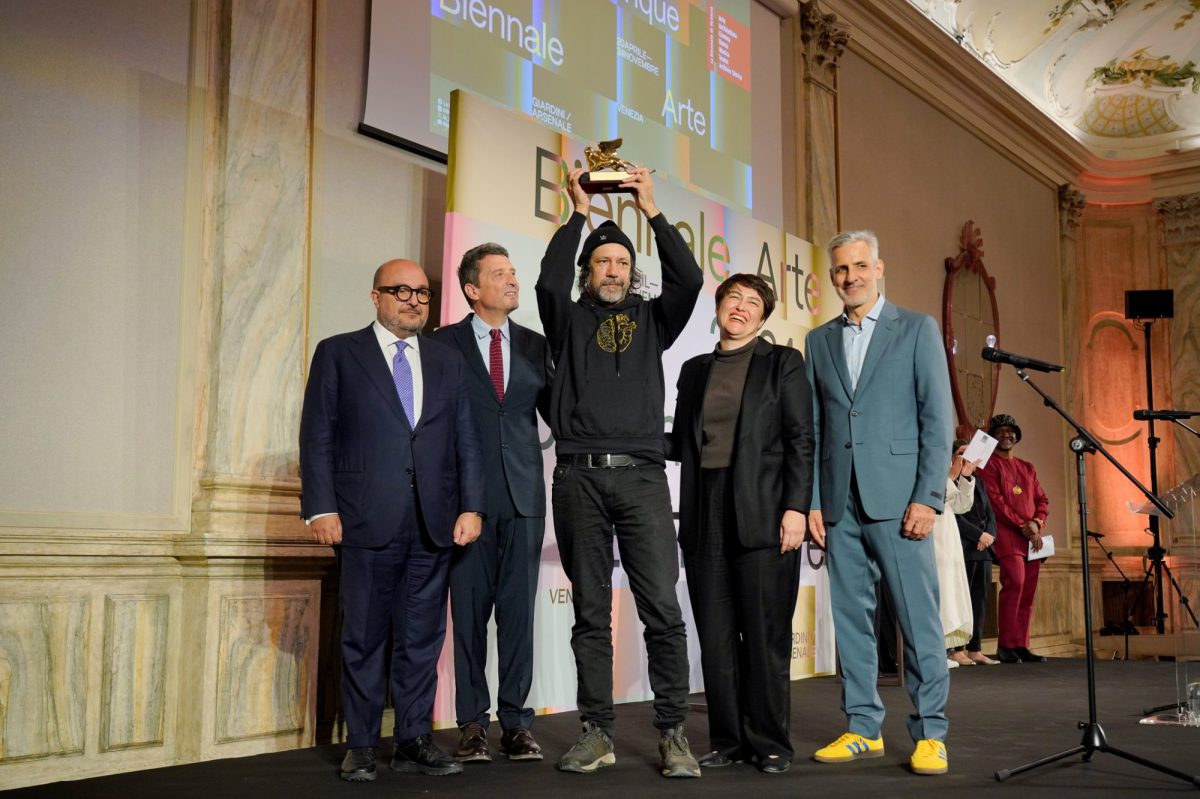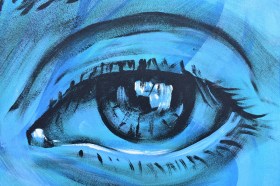International recognition and global accolades for Australian artists and creative practice is welcome confirmation of Australia’s position as a cultural powerhouse.
Kamilaroi/Bigambul man, Archie Moore made history this year, becoming the first Australian to win the top award, the coveted Golden Lion, for his exhibition kith and kin.
Archie Moore’s success has been featured in news services and industry media across the world. He is only the second solo Australian First Nations artist to present in the Australia Pavilion at the Biennale.
His success comes after the Biennale announced that it will award the Golden Lion for Theatre’s Lifetime Achievement to Back to Back Theatre, an ensemble company of artists who are perceived to have intellectual disabilities or who are neurodiverse. This is the same company that was awarded Norway’s prestigious International Ibsen Award for theatre in 2022.
Read: Back to Back receives 2024 Golden Lion Award for theatre
Recently, Australian film director Peter Weir (who directed films including The Truman Show, Dead Poets Society and Gallipoli) received the Lifetime Achievement accolade at the Venice Film Festival.
Arts Minister Tony Burke and Shadow Minister Paul Fletcher acknowledged these back to back successes in statements to the Australian Parliament last week.
Burke said, ‘These are the most prestigious arts awards in the world. It’s the first time Australia has been awarded any, and we were awarded three. A lot of this is the result of not simply things that have happened over the last couple of years but achievements that have built for decades, under governments of each colour.’
Fletcher said, ‘It’s been a significant moment … what we have in the modern nation of Australia, which builds on a foundation of 65,000 years of culture, is a superpower, certainly as it applies in the world of arts and culture. Indigenous art, in many ways, is Australia’s superpower.’
It is easy to make statements comparing such golden recognition with the winning of Olympic gold. However, these awards are what the Olympics is to sports and what the Nobel Prize is to science, and we should equally respect and celebrate these achievements and the profound impact their work has on the cultural fabric of our nation. Archie Moore, Peter Weir and the artists of Back to Back Theatre have earned the highest recognition by peers in international arts and culture, which also reflects wonderfully well on Australia and our place in the world.
In awarding the Golden Lion to Archie Moore, the Venice Biennale cited: ‘In this quiet, impactful pavilion, Archie Moore worked for months to hand-draw in chalk a monumental First Nation family tree.
‘The official documents drawn up by the State float in a moat of water. The result of Moore’s intensive research, these documents reflect the high rates of incarceration of First Nations people.
‘This installation stands out for its strong aesthetic, its lyricism and its invocation of a shared loss of an occluded past.’
Based in Geelong, Victoria, Back to Back Theatre has been touring the world since 1994, when it took Voices of Desire to Brussels. The company has since played in major centres like the Barbican in London, the Lincoln Center in New York and the Tokyo Metropolitan Theatre, earning the most thoughtful and praiseworthy reviews and many national and international awards. Arguably, Back to Back is more recognised overseas than in Australia.
The Biennale’s announcement describes Back to Back Theatre as: ‘A visionary parable of communication that with poetic ferocity disintegrates every prejudice, every stigma of compassion: if the body has expressive limitations, on stage these demarcations themselves become a different grammar… Because no matter what limitation a person may feel, it is up to us as the human consortium to remove it; this is what culture does, this is theatre to be deserved, this and much more is Back to Back Theatre.’
Of course, the reason for such recognition lies squarely with the individual genius and skill of the artists and ensembles recognised. But what can be learned from such surprising “overnight” and coincident success that has been decades in the making? Here are a few common threads.
Both the voice of Back to Back Theatre and the voice of Archie Moore come from, what some perceive, as the social and cultural margins (although this is shifting as our nation’s cultural reckoning matures). What is clear is that the imaginative insights and expression of artists with a disability, or the elegant reflection of a First Nations artist on the consequences of colonisation, all benefit from public and philanthropic investment for the creation of compelling work that can engage the world’s attention.
Critically, far from being voices on the margin, such work signals what is most exciting about contemporary Australia: from its ancient cultures to its glorious recognition of diverse cultures and talent, working at their best.
For an ensemble theatre, the ability to invest in people and have time to develop work is essential. This takes a mix of funding over a sustained period. Back to Back has been the beneficiary of public and private investment since its inception in 1987, including multi-year funding via the Australia Council, now Creative Australia, since 1998. Many individuals across Australia and nearly 40 family trusts and foundations have supported Back to Back Theatre, from the Sidney Myer Fund to the Keir Foundation, among many others, all believing passionately in the importance of their work.
The Venice Biennale is an exemplar of how public and private collaboration can provide the scaffolding to realise utterly original and bold artistic ambition. And while each presentation in the Australia Pavilion has been dramatically different, and the critical response been highly varied and opinionated, sustained public funding and philanthropic co-investment has enabled Australia to build its international presence and engagement through the Venice Biennale for almost 50 years.
Finally, I think of place, which is always essential to how work is conceived and how it is made.
Geelong’s Back to Back Theatre is a regional theatre company of national and international significance. The company’s philosophical approach to creating work and engaging with communities challenges some of the dominant modes of the presentation of theatre in regional settings, its existence proving that genuine community engagement has a significant effect on the cultural diversity and identity of Australian creative practice.
For Archie Moore it would certainly be his connection to Country. The Australia Pavilion itself, situated in the Venice Giardini, adjacent to the canal, became part of Archie’s vision. In his words: ‘As the water flows through the canals of Venice to the Lagoon, then to the Adriatic Sea, it then travels to the oceans and to the rest of the world – enveloping the continent of Australia – connecting us all here on Earth.’
Today’s successes for Australia’s visual artists are indebted to the future visioning of the Belgiorno-Nettis Family and the championing of Simon and Catriona Mordant who, in turn, secured and drove the rebuilding of the Australia Pavilion in Venice’s Giardini, which opened in 2015. The rebuild was also committed to by the Australian Government through Tony Burke when he was Minister for Arts in 2013.
Leaders including John Kaldor AM, Doug Hall AM, Simon Mordant AO, Naomi Milgrom AC and, more recently, Kerry Gardner AM and Robert Morgan (Creative Australia‘s current Chair) have all championed and generously contributed, making personal commitments to Australian artistry engaging on the world stage.
Read: Budget 2024-25: what’s in it for the arts?
Such public-private partnerships are impactful, offering a mutuality of confidence and purpose for projects that create unprecedented cultural and social value, whether through arts or science.
The impact of Archie Moore’s work, or of Back to Back Theatre’s work, is all to do with their respective genius and imaginative spirit. But the way such work is supported and encouraged, through public and private investment, speaks volumes about the creative ambition of contemporary Australia. We must take this moment to celebrate and build on this momentum with confidence.





